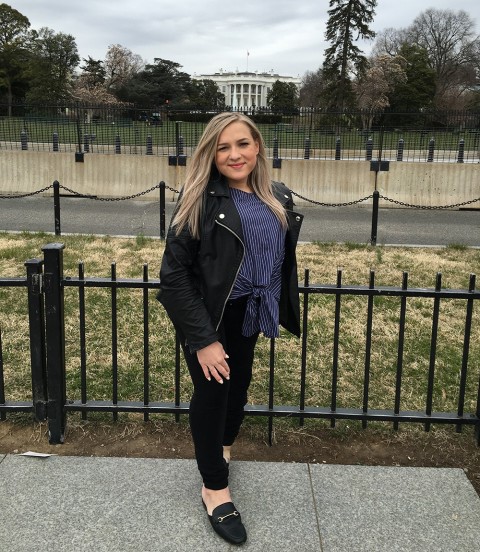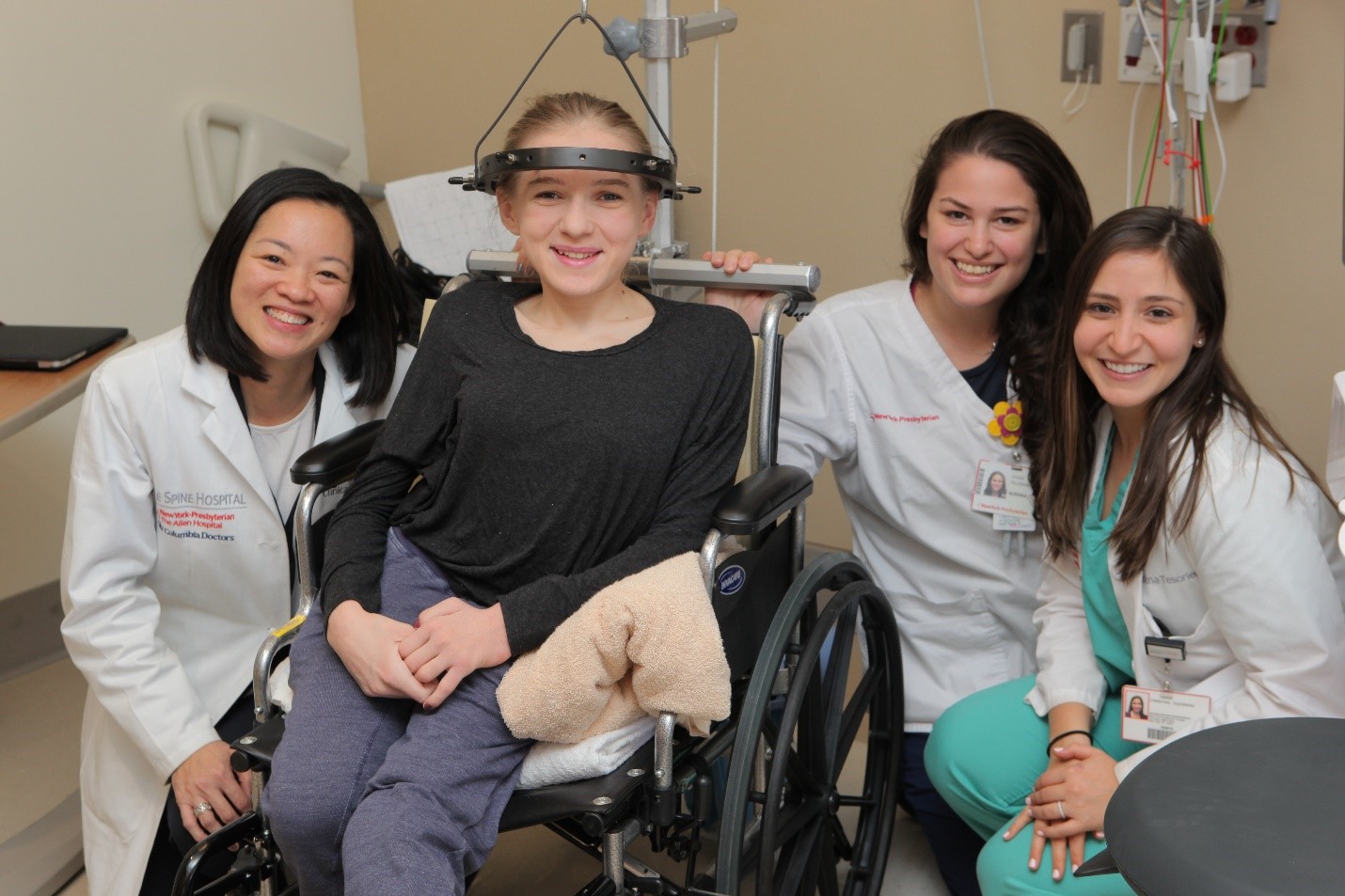Solomiya Dezhnyuk's Story
I was walking on my own with no walker after six months. I grew a few inches, and I feel so much better, this was an awesome experience.
 During her infancy, Solomiya Dezhnyuk had developed a cyst in her spinal cord that ruptured, causing meningitis and depriving her of mobility in her left arm and leg. The cyst left the trunk of her body weak and caused scoliosis early in life, severely curving her spine.
During her infancy, Solomiya Dezhnyuk had developed a cyst in her spinal cord that ruptured, causing meningitis and depriving her of mobility in her left arm and leg. The cyst left the trunk of her body weak and caused scoliosis early in life, severely curving her spine.
Her condition steadily worsened over the years, creating a large protruding bump on her upper back and compressing her organs. She experienced shortness of breath because her heart and lungs were confined to a mere 3- to 4-inch space.
After two unsuccessful surgeries, her previous doctor referred her to Dr. Lawrence Lenke, a world-renowned spine surgeon at the NewYork-Presbyerian Och Spine Hospital in New York City. Despite having extensive experience tackling the most complex spinal reconstructions, Lenke was awed by what he saw when he first met Dezhnyuk.
"She had one of the most severe clinical spinal deformities I'd ever seen in my 23-year career," Lenke says. Yet he was determined to do whatever it took to free Dezhnyuk from a life of constant, debilitating pain.
Lenke's plan to straighten her spine had multiple phases. First, Dezhnyuk spent six weeks in the NewYork-Presbyerian Och Spine Hospital in a halo — a bracket around her skull connected to a device that applied traction and stretched out her spine before surgery. Bolstered by her team of supportive nurses and therapists, who became her "hospital family," she bravely endured this uncomfortable process. Then it came time for the surgery.
In December 2015, Lenke conducted a rarely-performed and complex surgery — called a "vertebral column resection"— that involves breaking the spine in the middle, separating it into two pieces, moving the pieces into their correct positions and permanently fixing the spine in place.
To ensure Dezhnyuk's safety, a group of specialists conducted careful neurophysiological monitoring to make sure her nerves were still functioning.
During the procedure, Dezhnyuk was able to conduct simple tasks that the operating room team asked of her, such as squeezing a hand or moving her toes. After two 10-hour surgeries, she emerged with a straightened spine — and a new lease on life.

According to Lenke, it usually takes three to six months after surgery for patients to notice an improvement in their
breathing. However, Dezhnyuk noticed it immediately after the surgery was completed.
"Right when I woke up, it was already so much easier to take a deep breath," Dezhnyuk says.
Her parents, Nina and Alexander, could not have been happier about her successful recovery.
Dezhnyuk began rehabilitation to adjust to life with her newly aligned spine and to regain the independence she had been denied for so many years. She is now a student at Summit International School of Ministry in Pennsylvania.
"I expect her to continue to improve over time," Lenke says. "She's a delightful young lady, and I am honored to take care of her."
As a young woman of strong faith, Dezhnyuk says that "it's by God's grace that I am alive," and is planning to pursue a career in ministry.
"I was walking on my own with no walker after six months. I grew a few inches, and I feel so much better, this was an awesome experience,” Dezhnyuk says. “I'm thankful to everyone at NewYork-Presbyterian for their love and support."



